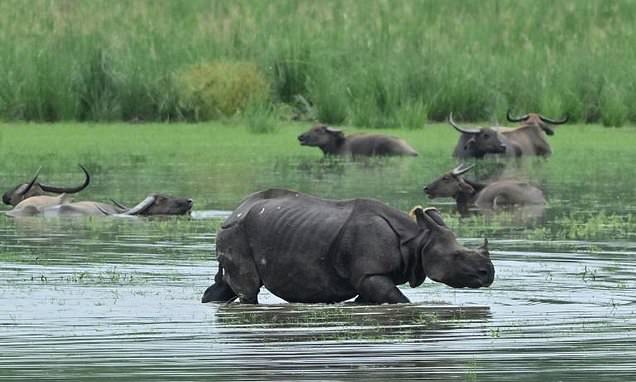Home / Disasters and Accidents / Floods Displace Elephants and Rhinos from India's Wildlife Sanctuaries
Floods Displace Elephants and Rhinos from India's Wildlife Sanctuaries
8 Oct
Summary
- India's rhino population has almost tripled in 40 years
- Floods submerge two major wildlife sanctuaries in West Bengal
- Herds of elephants, tigers, and leopards forced to flee the rising waters

According to the latest reports, India's one-horned rhino population has seen a remarkable resurgence over the past four decades, nearly tripling from 1,500 to over 4,000 today. This success is largely attributed to the country's dedicated conservation and anti-poaching initiatives.
However, the recent flooding crisis in West Bengal has dealt a significant blow to the region's iconic wildlife. Heavy rains and torrential downpours have submerged large parts of the Gorumara and Jaldapara national parks, two protected reserves that are home to a diverse array of species, including elephants, bison, tigers, and the endangered one-horned rhinoceros.
The deluge has forced many of these animals to flee their habitats, with a herd of 30 elephants spotted "running through water, trumpeting loudly" as they sought higher ground. A leopard was also seen "negotiating choppy water," though its current whereabouts remain unknown. Tragically, the carcasses of several dead animals, including two leopards, a rhino, and various bison and deer, have started emerging on the riverbanks.
While some rescues have been successful, with two captive elephants helping to pull an adult rhino and two elephant calves from the floodwaters, the long-term impact on the region's wildlife remains uncertain. As the waters continue to rise, conservationists and authorities are working tirelessly to protect the displaced animals and assess the full extent of the damage.




